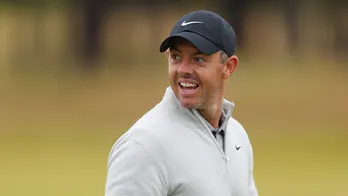Tokyo 2020: Vikas Krishan, ready to give as good as he gets
There was a time when Vikas Krishan was seen as a perfect understudy to Vijender Singh. Both were products of the famed Bhiwani Boxing Club in Haryana. While Vijender made the world take note of Indian boxers with a 75kg bronze at the 2008 Olympics, teenager Krishan was proving a handful to opponents at youth level.

Those baby steps soon grew into rapid strides at senior level when Krishan, still only 18, surprised all by winning the lightweight (60kg) gold at the 2010 Asian Games. It was natural progression to the 2012 London Olympics, though it only started a series of haunting memories.
At London’s ExCeL Exhibition Centre, Krishan was a win away from a medal as he entered the 69kg quarter-final, adjudged winner over Errol Spencer Jr of the US. The celebrations though didn’t last long as the result was overturned following a protest by the US. Some experts felt Krishan would have been better off had he been more aggressive overall.
Kishan though came back strong at the 2016 Rio Games in 75kg. Vijender had by then turned professional and Krishan was expected to follow in his footsteps. He again fell a win short in Brazil, losing the quarter-final to Uzbekistan’s Bektemir Melikuziev, the eventual silver medallist.
“Those memories still haunt me. I am the only Indian male boxer to win the Asian Games and Commonwealth Games gold (2018). I started my senior career with a gold, I want to finish it with an Olympics medal,” Krishan said from his base at the National Institute of Sport, Patiala.
The Tokyo Olympics will provide him a third chance (among Indian boxers, only Vijender and Mary Kom have taken part in three Games) to win an Olympic medal. It will also be his final attempt.
“This is my last Olympics. I have nothing to lose. I will punch them hard this time, my opponents will feel it. I came close (2012 and 2016), but what to do? Maybe God wanted me to wait a bit longer.
“In London, I was expected to carry forward the legacy of Vijender. I was young and did not understand many things… Now, I want to leave my legacy.”
The Indian men’s boxing has grown in strength in the last decade and Krishan, 29, has been the dot connecting the old and new.
“I am the oldest in the men’s camp. I have been part of the senior set-up for more than a decade. There are guys who have been in the senior camp for five years or less. There is a responsibility now on me,” he said.
After competing in 75kg from 2014-2018, Krishan went back to 69kg in the last two years and will stick to it in Tokyo. “This is a tough category. In the lighter weights, the strategy is mostly hit and run. Heavier weights rely on power punches. The 69kg and 75kg are the middle weights. In 75kg the focus still more on power, but in 69kg, the variety is more. Some boxers rely on speed, some on solid technique and some on power.
“India never had anything to show in 69kg. Even Vijender, who boxed in 69kg before moving to 75kg, did not win anything major in the category. Dilbag Singh dominated 69kg for 10 years, but even he did not have anything major to show. I want to leave a mark.”
The bronze won at the Dubai Asian meet in May has boosted Krishan’s belief.
“It was a good experience. But I also got two-three cuts above my left eyebrow; that’s why I did not compete in the semi-finals. I got six stitches and didn’t want to take a risk.
Managing body weight will be key for Krishan, who has also trained at Inspire Institute of Sport in Vijaynagar, Karnataka. “I weigh around 71kg. My plan would be to bring it down to 69kg at least once in the week leading to Olympics. That way my body will be accustomed to the weight.”
At the camp organised in Italy, and as India tune up to Tokyo, Krishan’s focus has been on fine-tuning technique.
“After qualifying, I sat down with CA Kuttappa sir (India's chief men's boxing coach), Santiago Nieva (High Performance Director) and personal coach Roland Simms (US). We marked out four-five areas that would stop me from winning an Olympic medal,” Krishan said.
The learning process has mostly focused on footwork and balance, more like professionals. Krishan himself was briefly a pro in 2019, and has two wins.
“The focus has been on how professional boxers compete. They play to hurt the opponent so the rival quits. They prepare for longer rounds, 6 to 12. Amateur boxing is about scoring points; it is hit and run. The amateurs rely more on speed, while professionals have power. Pros are more stable in leg-work. I want to have that aspect in my boxing. My speed has always been good and I am counting on it,” Krishan said.
“I don’t want to research too much about my opponents. That puts pressure on me. Rather I am focusing on my own strengths. Earlier, I was only concerned about my tight guard. Now I am focusing much on stepping back so that I can get more counters.
“In pro, I was much more stable and waiting for the hard punches; in amateur, we have only three rounds. Also, padding on the gloves is good so we generally don’t get a knockout. What I am trying is to use more legs, and fast hands to score, not to get knocked down or wait for the opponent to deliver hard blows. If the opposition comes, I am going to hit him hard and keep on scoring.
“After Olympic qualification, I sat with my coaches and wrote down areas I need to work on. First of all, I needed to work on my left hand. It was not that effective, but now I have achieved my target. My left is working as much as my right. I have greater control and balance. I have also worked on my power.”
Disclaimer: The copyright of this article belongs to the original author. Reposting this article is solely for the purpose of information dissemination and does not constitute any investment advice. If there is any infringement, please contact us immediately. We will make corrections or deletions as necessary. Thank you.







